by | Mohd Hasan Mohd Saaid, hasan@might.org.my | Anis Najihah Ahmad
In the first ever world disability report published in 2011, Stephen Hawking wrote, “Disability need not be an obstacle to success.” One of the world’s most revered scientists of modern time, the wheelchairbound physicist was surely a proof that it wasn’t. Across the world, approximately 15% of the world’s population live with some form of
disability, of whom 2- 4% experience significant functional difficulties. Meanwhile in Malaysia, there are 486, 878 registered disabled citizens. The actual amount might be bigger as registration is voluntary. Based on the Persons of Disabilities Act 2008 Malaysia, Persons with Disabilities (PWD) include those who have long term physical, mental, intellectual or sensory impairments (visual impairment, hearing impairment or speech impairment) which cause various barriers that may hinder them from full or effective participation in society.
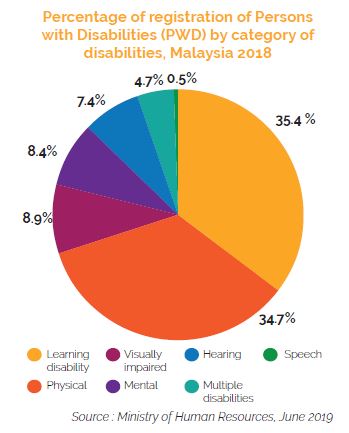
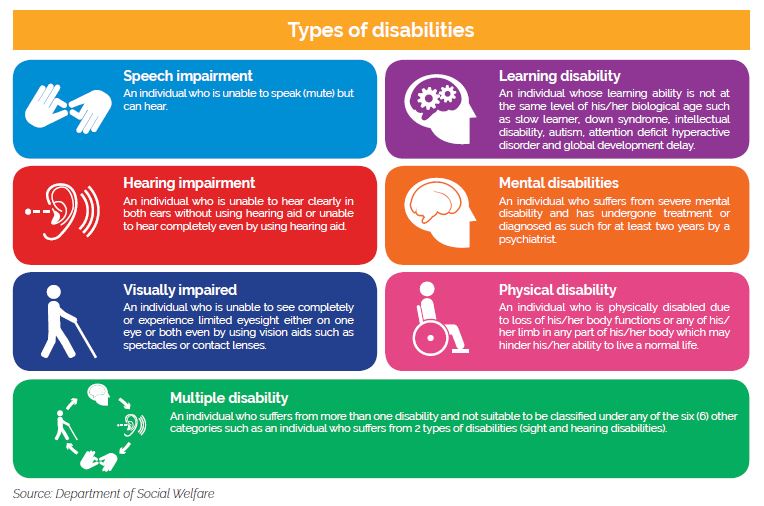
In September 2015, the General Assembly of the United Nations introduced the 2030 Agenda for Sustainable
Development with 17 Sustainable Development Goals (SDGs). Building on the principle of “leaving no one behind”, the new agenda emphasises a holistic approach in achieving sustainable development for everyone including the disabled, of which implementation ideas laid across touch 5 out of the 17 goals.
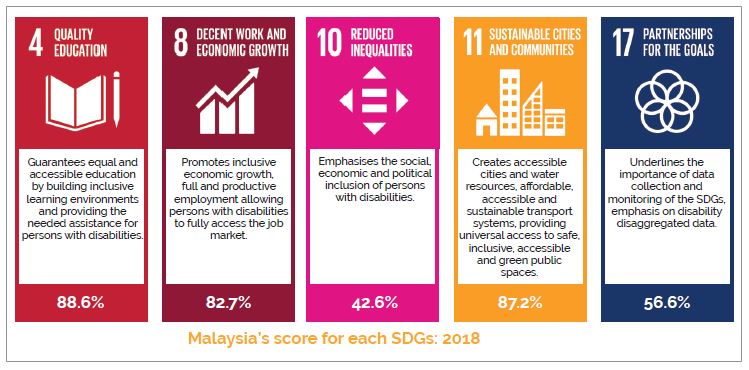
Disability in Islam
In Islam, disability is seen as a challenge faced by an individual rather than as a form of punishment. It is part of the Maqasid doctrine (Islamic legal doctrine) where God’s law aims to benefit people regardless of their physical or mental state by protecting their religion, life, progeny, wealth and intellect. As such, according to the Qur’an, disabled people have the right to be respected (Surat al-Hujuraat: 11) and enjoy social justice. Another surah quoted
that they need to be provided with basic needs such as food and clothes (Surat An-Nur: 61) as well as to receive treatment and rehabilitation. Moreover, the Quran also stated that certain religious duties such as Hajj and Salah are to be reduced or waived based on their condition, hence, allowing them to perform religious activities without burdening them. In countries where Sharia laws are in effect, there are provisions for disabled people to receive a portion of the zakat. In Malaysia, Dr. Maszlee Malik, the Education Minister proposed the idea of doing so through fisabilillah application (in the cause of Allah), though, the idea is yet to be accepted.
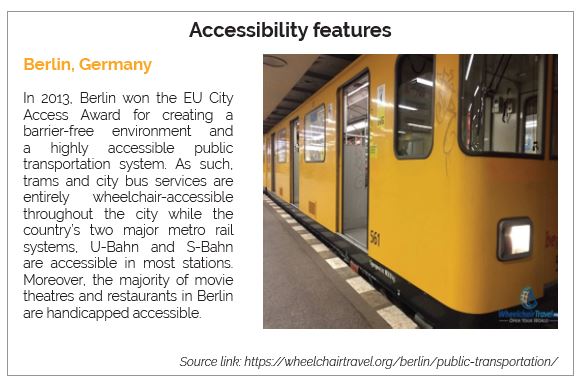
How inclusive are they?
Education
Inclusive education for people with disabilities is one of the world’s most pressing sustainable
development goals.
What is inclusive education?
Inclusive education, in simple words is a situation where disabled children are placed alongside other children where they fully partake in mainstream classes—not in isolation such as integration or special classes or special schools for that matter. In an inclusive setting, students are not expected to work at grade level and “keep up” with other students. Instead, they are asked to “keep learning” and fully participate with other students. Inclusion is not about children with disabilities fitting in and meeting mainstream education targets but about the system adapting to include them.
World overview
UNESCO carried out a study on the education of children with disabilities. It found out that:
• On average, across 22 countries, people aged 25 years and older without disabilities have 7 years of schooling, compared to 4.8 years for those with disabilities.
• In 25 countries, the adult literacy rate for those with disabilities is lower than for other adults. The gap ranges
from 5% in Mali to 41% in Indonesia, where the vast majority of adults without disabilities (93%) have basic
literacy skills, compared to only half (52%) of adults with disabilities.
Inclusive education in Malaysia
Article 28 of Malaysia’s Persons with Disabilities Act 2008 affirms that special needs children are to be given the necessary support to facilitate their full and equal participation in education. Malaysia’s National Education Blueprint has set a target of 75% of special needs students receiving basic education via the Inclusive Education Program (PPI) by 2023. In response, on December 2018, National Early Childhood Intervention Council (NECIC) conducted a survey on 406 parents of children with disabilities throughout Malaysia.
The participants comprised of those who studied in Ministry of Education (MOE) school (70%), private (14%), international (10%) and homeschool (6%). Below is the
summary of the report.
By and large, the Minister of Education has promised to upgrade and improve the nation’s special education schools. He has also directed every program sponsored by the Ministry of Education and Dewan Budaya dan Pustaka to include a sign language interpreter. The Ministry is also beginning to implement the Zero Reject Policy in 2019 to ensure special needs students get access to education. They will be upgrading schools throughout the country to become more OKU-friendly by allocating RM200,000 for each school.
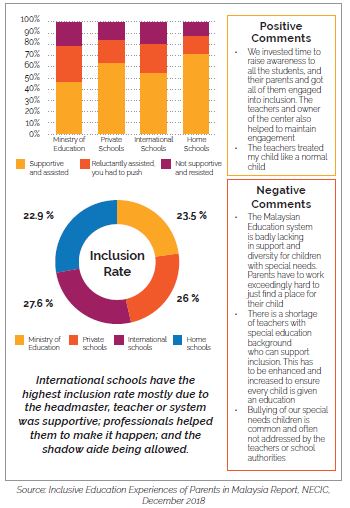
Employment
According to the UCLA analysis, there are nearly half a billion working age people with disabilities globally. However, most of them are unemployed. Some countries, like Japan and Montenegro require companies to employ a specified percentage of disabled workers or face a fine. However, the fines are usually low enough and some companies choose to just pay the fine. Peru meanwhile, has a quota system where employers are required to hire 5% of workers with disabilities in the public sector and 3% in the private sector.
Nevertheless, International Labour Organisation (ILO) Report 2018 reported that people with disabilities are still far less likely to be employed. The graph below shows the employment-to-population ratio for people with and without disabilities, by gender in 2010 for Brazil, France, Germany, Italy, Saudi Arabia, Turkey and United Kingdom.
The figure showed that people with disabilities had lower employment rate compared to those without disability. It also showed that women with or without disabilities had lower employment rate. In the United States, the unemployment rate in 2018 for people with disabilities was 8% compared to 3.7% for those without disability.
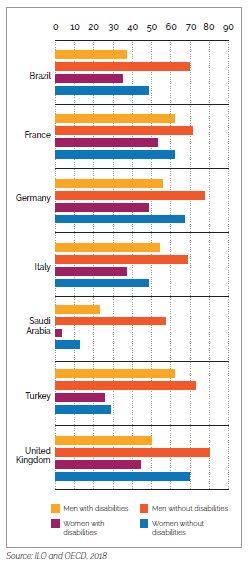
Employment of disabled people in Malaysia
Malaysia targets at least 1% of disabled people employment in public sectors according to Section 29 of the Disabled Persons Act 2008. Until 2018, 3,782 PWDs were reportedly employed by government agencies where the target is to reach 12,811 employment count. Deputy Women, Family and Community Development Minister stated that companies will get double tax deductions if they hire a disabled person. For instance, if they hire a disabled worker for RM 12,000 per year, their tax deductions would be RM 24,000.
On the other hand, for the disabled, the Department of Social Welfare Malaysia provides multitude facilities
and services to assist them. As such, the Launching Grant program provides financial assistance for registered PWDs to participate in small business and entrepreneurship with seed money of RM2700. Apart from this, aid is also given for unemployed PWDs with a monthly allowance of RM200. All these aids and more are available on the Department of Social Welfare Malaysia’s website. However, for the disabled, despite the hiring rate increasing, the need to have an accessible working environment that provides disabled-friendly facilities and services such as special transportation and ramps is vital.
Perception toward the disabled
There are many stigmas and perceptions pertaining to people with disabilities. “Don’t judge a book by its cover” is a fitting analogy in this respect. Below are some examples of discourteous behaviours toward people with disabilities:
• Stereotyping: People sometimes stereotype those with disabilities, assuming their quality of life is poor or that they are unhealthy because of their impairments.
• Stigma, prejudice, and discrimination: Within society, these attitudes may come from people’s ideas related to disabilities. People may see disability as a personal tragedy, as something that needs to be cured or prevented, as a punishment for wrongdoing, or as an indication of the lack of ability to behave as expected in society.
Malaysian’s perception towards disability
UNICEF recently launched a study to gauge perceptions on childhood disabilities among Malaysians to which it revealed a slight discrimination against the group. A total of 756 participants from Selangor, Kelantan, Sabah and Sarawak took part in the study conducted between January and September 2016. The Star excerpt shown below is the recap of the results.
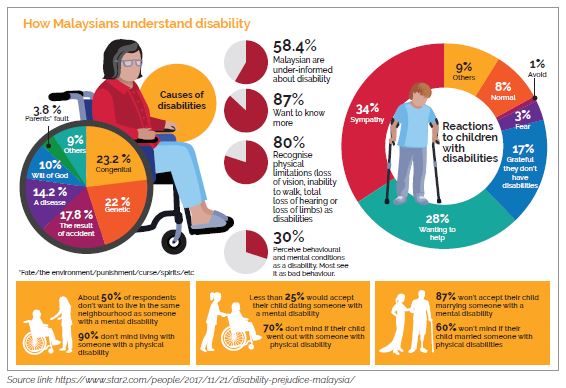
From the results, it can be concluded that Malaysians in general still have low understanding of disability though
most of them wished they knew more. Only a few were reported to know that mental illness was also considered as a disability. Hence, improving awareness across the board is a good idea to begin with. It is also crucial for people with disabilities in the country to understand and register as one. The Minister of Women, Family and Community Development suggested that some of the reasons that account for why some disabled citizens have not registered are not knowing what to do, unwilling to register or one simply does not know that he/she is disabled. Unfortunately, failing to register will prevent them from receiving many of the benefits that government can offer. The registration can be done on the Department of Social Welfare Malaysia’s website.
Final Words
Although people with disabilities are the largest minority group in the world, they can still contribute to the society.
Delivering an inclusive education system would be a great start to promote better well-being for them. Therefore, the responsibility to cater to their unique needs should be viewed as an instrument that can provide a better life for the country’s most deserving underprivileged group. In relation, Malaysia is currently attempting many efforts and strategies to create impact in order to realise all of its Sustainable Development Goals (SDGs). Individually, as
Malaysians, we can collectively contribute to the cause by making more conscious effort to better understand their needs. “There is no greater disability in society than the inability to see a person as more” – Robert M. Hensel











